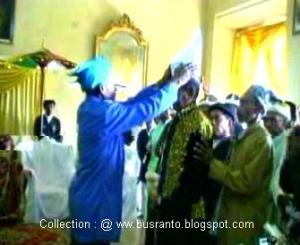Tracing the footsteps of history and discuss the sultanate Jailolo, become more attractive lately, after dinobatkannya Br. Abdullah "Abdul Rahman Haryanto" Shah Sultan Jailolo be performed in the palace of the Sultanate of Ternate on the initiative of the Sultan of Ternate; Mudafar H. Shah II, the last few years. Even more interesting than it is to trace the descendants of the kings and sisilah Jailolo itself.
Just info, that some researchers history of the kingdoms in Indonesia such as; Donald P. Tick gRMK (in the Netherlands), and Hans Christopher Buyers Hagerdal until now had not been able to make an article or a book that talks about the history traces and sisilah kings Jailolo intact and detailed. The challenge remains limited sources and references pertaining to reconstruct the history of the empire Jailolo facts. So far, there is a well-known historian of the University of Indonesia Professor DR. Richard Z. Leiriza who've been making some papers on the history of King Jailolo earning his Ph.D. in 1990 with dissertasi titled "King Jailolo and East Halmahera: Upheaval in the Seram Sea at the beginning of the 19th century" (The King of Jailolo and Eastern Halmahera: Social upheavals in the Seram Sea during the early 19th century). Then published by Balai Pustaka, 1994.
One of the books that are also pretty much describes the history of Sultan Jailolo Phase II (Muhammad Arif When) a Sangadji Tahane raised by Nuku of Tidore to complete the four pillars MOLOKU IEC RAHA is a major work entitled ELVIANUS Katoppo; "Nuku, Sultan Muhammad Saidul Jehad el Mabus Amiruddin Shah Kaicil Paparangan alisa Jou Barakati - SULTAN TIDORE - (History of Indonesian Independence Struggle in North Maluku in 1780-1805)".
Indeed, sources and historical references about the empire Jailolo very minimal. However, of the hundreds of thousands of North Maluku were alive today, there are still some communities that still keep a copy of the document sisilah Jailolo descendant of the kings, which was written on a piece of "old manuscript". Daftarf sisilah kings Jailolo consists of three parts. Large sheet is a description sisilah list whose scheme described as "inverted tree" that whole writing beraksara Arabic names, is a copy of the sheet again re also in Arabic script, but more detailed and clarified by circling every name listed as the original sheet already almost obsolete, while another small sheet bearing the Arabic alphabet and the language berlafadz-Tidore is a Certificate of manjelaskan about the sisilah list.

Before Bro. Abdullah "Abdul Rahman Haryanto" Jailolo Sultan Shah crowned today, the descendants of Sultan Prayer scattered everywhere ie in Tidore (Soa Sambelo, Mareku and Toloa), the island of Ternate (Dufa-Dufa), Moti island, and the island Makian corresponding groove on the island of Ambon in the sisilah list, they seemed to have been shut down to think of "to-Jailolo's" her. For them it is all part of the past. Maybe they think is; Enough of our children and grandchildren to know that our ancestors did come from Jailolo, that's all. And maybe also the Latin motto; "Ubi Bene Ibi Patria - which means; Where is the love in my life where my homeland "have in their minds, Allaah wa'lam. Only those who know. Especially after dinobatkannya Br. Abdullah "Abdul Rahman Haryanto" Shah became "a symbol of" the empire of modern Jailolo, made-to-late they closed the meeting. Considering almost all of them know that the descendants of Sultan Prayer and moved to the island of Tidore Tidore sultanate became servant and given an area to build settlements (Soa Sambelo - Sabua ma belo) time it is a result of internal political upheaval among the nobles at the court when it Jailolo, leaving aside his throne in order to avoid civil war and bloodshed are more powerful that could threaten the survival and honor Buldan Jailolo in Tagalaya Lemons - Jailolo.
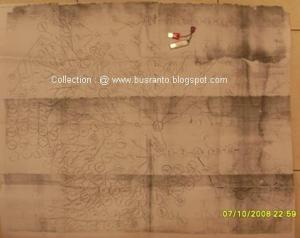
As an observer of the culture, tradition and history of North Maluku, I am very interested to study studies on this subject. Attempts to reconstruct the historical facts about the trip back sultanate history Jailolo continue to do with collecting various written sources both domestic and foreign sources. Aspects of subjectivity that may still exist in the history of the respective authors including the present moment I am in this article to the blog, attempted to be minimized as much as possible, in order to achieve an outcome that is more objective study of historiography.
Some time ago I used to make contact and sharing with two researchers in Indonesian history kerajaan2 as I mentioned above, namely: Donald P. Tick gRMK and Christopher Buyers including Hans Hagerdal (please searching these names in Google Search) connection with the study of the history of this Jailolo sultanate. They write a lot about the surrounding kingdoms in Indonesia including Jailolo kingdom. These historians interested in researching more about sisilah kings Jailolo I suggested this, including their desire to examine where it comes from sisilah Sultan Abdullah Shah. Abdullah Shah believed was one of the descendants of Natural Gugu Prins fell down to Muhammad Asgar and Hay-ud-din were dumped by the Dutch into Cianjur in the year 1832 For the kingdoms in North Maluku, Ternate sultanate recently been published by the Royal Ark website the title "Ternate, Brief History", while for the Sultanate of Tidore, and Bacan Jailolo no complete data for publication.
After so much communication and sharing by two researchers of this history, I match the data historians mentioned above with copies of "old manuscript" (see picture), then there are a lot of similarities.
Thus in my opinion, is tentatively concluded that; When Muhammad Arif (in the sisilah written Gugu Sultan Alam) is a descendant of the 8th Natural Gugu Prins. Prins Natural Gugu is ancestral to the top of the eighth descendant of Sultan Muhammad Arif alias Gugu When Natural - There are a couple of the same name in this sisilah, but at different levels and periods of time. Prins Natural Gugu is is the youngest brother of the Sultan of Prayer and Prins Prentah. The three of them was the son of Sultan Yusuf, Sultan Sultan Jailolo Jailolo the ground Jailolo (Lemons Tagalaya) around the 1500s, the data in the right can not be ascertained.
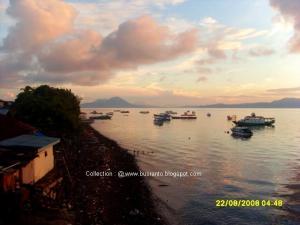
After lifting Nuku Muhammad Arif When a Sultan Jailolo I (designation according to the records of the source of the Netherlands), not everyone on the island of Halmahera (North) recognizes him as the Sultan Jailolo validity, besides those who claim to be this Jailolo Sultan (since 1637 until 1918 when discharged into Cianjur) they never ruled on the ground Jailolo itself, but only a Sultan Jailolo in exile just like in the Vedas and Halmahera rear as well also on the island of Seram.
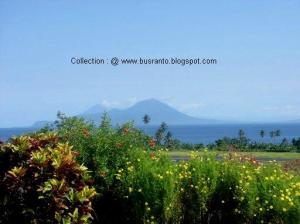 Region Jailolo sultanate of Ternate has been merged into the region since 1635, while during the reign of Sultan Nuku, the former sultanate Jailolo entrance in power sultanate of Tidore. When Muhammad Arif died in the Vedas in 1807 due to an accident.
Region Jailolo sultanate of Ternate has been merged into the region since 1635, while during the reign of Sultan Nuku, the former sultanate Jailolo entrance in power sultanate of Tidore. When Muhammad Arif died in the Vedas in 1807 due to an accident. His eldest son Muhammad Asgar raised by his followers in eastern Halmahera became Sultan Jailolo II, the 2nd time this. Chronological history of the sultanate Jailolo Period I (first) came from Kolano Daradjat and ends at the Sultan Prayer alone. (Descendants of the Sultan's Prayer is recorded clearly in sisilah this descent spread in North Maluku, including; island of Tidore - at most, the island of Moti, Makian island, the island of Ternate, etc.). It is also a concern for both researchers to conduct research later in the future.
In 1810 Mohammed Asgar was captured by the British because the British rulers who were in power at the time did not recognize him as Sultan Jailolo. Then in 1817 Mohammed Asgar exiled to Semarang and live away from the hustle of the city of Semarang around between Semarang and Jepara.
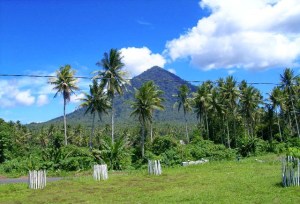 In 1825 after the Dutch returned to power after the UK, he returned to North Maluku and was appointed by the Dutch authorities as before as the Sultan Jailolo in exile but based on Seram island in Central Maluku. Brother Haji Muhammad Asgar Kaicil the following along with his followers to the island of Seram and eventually was appointed the Dutch became the Sultan Jailolo III with the name of greatness; Sultan ud-din Syaif Hay Jihad Muhammad ud-din Shah.
In 1825 after the Dutch returned to power after the UK, he returned to North Maluku and was appointed by the Dutch authorities as before as the Sultan Jailolo in exile but based on Seram island in Central Maluku. Brother Haji Muhammad Asgar Kaicil the following along with his followers to the island of Seram and eventually was appointed the Dutch became the Sultan Jailolo III with the name of greatness; Sultan ud-din Syaif Hay Jihad Muhammad ud-din Shah. Because of a dispute with the Dutch, the Sultan finally Jailolo III along with Jogugu Jamaluddin, Capita Kamadian sea and the entire family of 60 people exiled Dutch to Batavia and then to Cianjur. He died in 1839 in Cianjur, West Java. Finally, the existence of the empire Jailolo Stage III even this ends. And Maloku Kie Raha stay only 3 sultanate, namely Ternate, Tidore and Bacan.
As I mentioned above, that according to my assumption, the possibility of this descent, the search performed by the current Sultan of Ternate to pick Shah Abdullah bin Abdul Haryanto and appointed him Sultan Jailolo now, is the offspring of this Cianjur. For this I have not had time to do an interview with the Sultan of Ternate. In addition, the appointment of Sultan Jailolo is also done with a special ritual by Mudafar Sultan Shah II and takes quite a long time. (usually called the Sultan of Ternate people Jailolo as "Kolano JOU TIA").sebutan “KOLANO JOU TIA”).
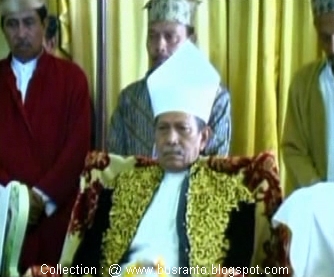
Attempts to revive the sultanate Jailolo Level IV, was done by Hasan Baba Dano in 1876. It asked the Dutch government to admit as Sultan Jailolo. According to several authors, Dano Baba Hasan is affiliated Ternate palace in 1832 was appointed by the Sultan of Ternate Muhammad Zain became Salahakan (Utusan Sultan) on the island of Seram. 21 June, Hasan Baba Dano conclude its work and submit to Resident Tobias, and deported to Ternate and finally separated into Muntok in Sumatra. Merunut from sisilah is, Dano Baba Hasan is the grandson of Abdul Gani, the youngest of his brothers Mohammed and Mohammed Asgar Hayuddin thrown into the Cianjur.
After a period to turn the sultanate Jailolo Level IV failed, attempt to start it again that the period Jailolo Level V performed by Dano Jae ud-din in the Vedas and Waigeo in East Halmahera in 1914, A Dano from Ambon who are descendants of Hasan Baba Dano claim himself as heir, proclaimed himself as Sultan Jailolo at Level V period. It was later captured and imprisoned in Ternate Netherlands until the end of its life. Thus ended the sultanate was an attempt to revive Jailolo Level V also failed.
Need stripped-bawahi, that all efforts to revive the existence and powerful sultanate Jailolo the Sultan Jailolo in period II, III, IV and V, it is not located on the territory of the Sultanate Jailolo actually (Lime Tagalaya), but in isolation outside regional culture Jailolo sultanate itself.
The last attempt to revive the Sultanate Jailolo Level VI, then Sri Sultan of Ternate Mudafar H. Shah II took the initiative to revive the sultanate Jailolo that was lost for hundreds of years. This is done in order to maintain the existence of a culture of North Maluku as a unifying symbol of the nation in the crucible of RI and also in order to complement the four pillars of the federal governments "Maloku Kie Raha" which is just three, namely; Ternate, Tidore and Bacan. By pointing Bro. Haryanto Abdul Rahman Abdullah Shah, a former soldier that he is a descendant of the search according to Muhammad Asgar and Kaicil Hadji dumped by the Dutch into Cianjur West Java.
Because all communities in North Maluku know that there are only three pillars / sultanate time, that does not mean Maloku Kie Raha yet, but Maloku Kie Ra'ange. (Admin; Raha = four, Ra'ange = three).
So some of my sharing via email with both the foreign authors. On the last occasion via e-mail, Mr. Donal P. Tick gRMK, ask me a picture / photo of the Dano Jae-ud-din if any documents about it. But I think it is hard to get a picture of Dano Jae-ud-din they mean. He was interested to read about the descendants of Dano Jae-ud-din, said Mr. Donal P. Tick gRMK wrote in his e-mail:
"Interesting about the descendant of Hasan Baba Dano Dano with name Jae ud-din, who was regarded as dynastychief / heir in 1914 Do you know more about him? A picture of him would be fascinating. I also would like to know, if the present Sultan is taken very seriously. Some say he is only a creation of the Sultan of Ternate. "Thank you for all. If you want, you can add some info under the picture of Sultan Jailolo on my website at: http://kerajaan-indonesia.blogspot.com ".
But unfortunately, in the event SOUTH EAST ASIA ROYAL FESTIVAL in Bali on 25 to 30 November 2008 and Mr. Donal P. Tick gRMK could not attend because of a mega-project that can not be left in the Netherlands, so we plan to meet face to face also did not materialize. This is in connection with the interest of researchers is to uncover what they call "The Hidden History of Jailolo".
Sources:
1 Forrest, Thomas. 1780 (1779) A Voyage to New Guinea and the Moluccas, from Blambangan; Including an Account of Mangindanao, Sooloo, and Other islands; and Illustrated with Thirty Copperplates. Performed in the Tartar Galley, belonging to the Honourable East India Company, During the years 1774, 1775 and 1776. 2nd Edition. J. Donaldson, G. Robinson and J. Bell.
2 Royal Ark website, by; Christoper Buyers
3 Old Manusscript, Personal document from the deeper descendants of Prayer at the Sultan of Ternate Island.
4 Some Contribution and some descriptions from Mr. Donad P. Tick gRMK (Netherlands), based on the source from the list of the genealogy Jailolo Sultanate, the collection Coolhaas in the Nationaal Archief in Den Haag / the Netherlands.
Source of information is almost the same as the list of genealogy of the deeper descendants it Ternate island today. (see it on the picture).
= Additional resources from contributions and some clarification from Mr. DP Tick gRMK, in Hoillad Netherlands according to sources from the Sultanate Jailolo genealogical registers, collection Coolhaas in Nationaal Archief in The Hague / Netherlands. Source of information is similar to check the pedigree of the descendants of Sultan Prayer on the island Ternat. (see the picture).
sumber : http://ternate.wordpress.com/





 2:41 PM
2:41 PM
 vsz
vsz
